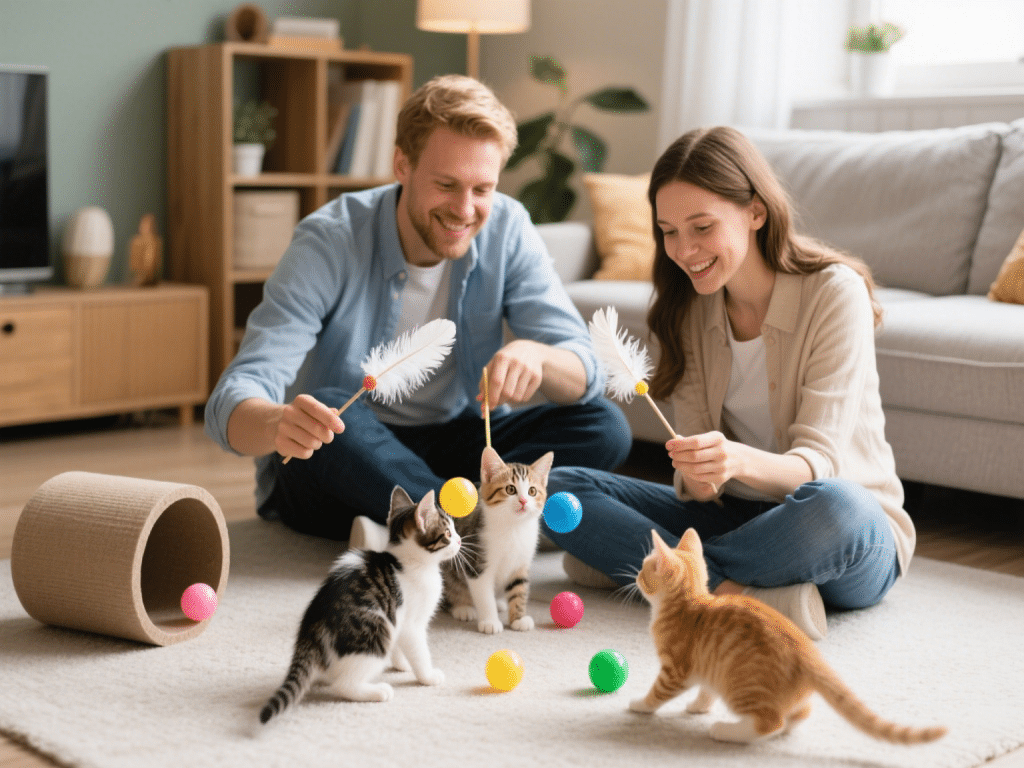
Optimal Feline Nutrition: Building a Balanced Diet for Lifelong Health
High‑quality nutrition underpins every aspect of your cat’s health—from glossy coat ...

Bringing home a newly adopted pet is an exciting journey filled with opportunities to forge a strong, lasting bond. Trust, patience, and consistent interaction are key to helping your new companion feel secure and loved. Here are seven proven ways to build a deep connection from day one.
Designate a Cozy Area: Provide a quiet corner with a comfortable bed, toys, and fresh water. Familiar items from the shelter (e.g., blanket, toy) can ease the transition.
Pet-Proof the Space: Remove hazards such as toxic plants, loose wires, and small objects. A safe environment helps reduce anxiety.
Consistent Feeding Times: Offer meals at the same times each day to create predictability.
Regular Bathroom Breaks: For dogs, take them outside on a schedule. For cats, maintain a clean litter box in a quiet location.
Structured Play and Training Sessions: Short, regular sessions reinforce commands and help your pet understand expectations.
Use High-Value Treats: Reward desired behaviors immediately to build trust.
Start with Basic Commands: Teach “sit,” “stay,” and “come.” Success in small tasks encourages confidence and cooperation.
Be Patient and Consistent: Training may take longer for a nervous or previously abused pet. Celebrate small wins.
Fetch and Tug-of-War for Dogs: Use toys that encourage active engagement.
Chase and Feather Toys for Cats: Stimulate natural hunting instincts with interactive wands.
Rotate Toys Regularly: Prevent boredom by introducing new or hidden toys every few days.
Slow Petting Sessions: Approach your pet calmly and allow them to initiate contact. Gradually increase the duration as they become more comfortable.
Massage and Grooming: Brushing fur or gentle massage can be soothing, provided your pet enjoys being touched.
Controlled Outdoor Adventures for Dogs: Use a secure harness and leash to explore your yard or nearby park. Novel scents and sights foster bonding.
Indoor Exploration for Cats: Create vertical spaces, window perches, and safe hiding spots to encourage curiosity while supervised.
Learn Body Language: Recognize signs of stress (e.g., flattened ears, tucked tail, lip licking) and give space if needed.
Adjust Interaction Style: Some pets crave affection; others prefer independence. Tailor your approach to their comfort level.
Be Patient with Shy or Fearful Pets: Offer treats and praise from a distance until they approach voluntarily.
Building a bond with a newly adopted pet takes time, patience, and empathy. By providing a secure environment, establishing routines, and using positive reinforcement, you’ll foster trust and companionship. Interactive play, gentle physical contact, and respect for your pet’s personality create a foundation for a fulfilling, lifelong relationship.

High‑quality nutrition underpins every aspect of your cat’s health—from glossy coat ...

Pet birds are prone to a range of diseases—from nutritional imbalances to respiratory in...

The critical socialization window for kittens spans 2 to 9 weeks of age. Proper exposure d...

A thoughtfully designed yard offers pets fresh air, exercise, and sensory enrichment. Howe...

Let’s face it — the smell of a used litter box can overpower even the cleanest home. A...

IntroductionFerrets are obligate carnivores requiring high-protein, low-carb diets. While ...
Comments on "Top 7 Ways to Bond With a Newly Adopted Pet" :